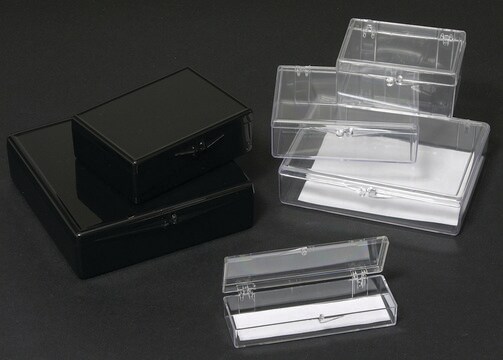ABS2103
Anti-BiP (GRP78) Antibody, arginylated (Nt-Glu19)
from rabbit, purified by affinity chromatography
Synonym(s):
78 kDa glucose-regulated protein, Nt-Glu19 arginylated, BiP, Nt-Glu19 arginylated, Endoplasmic reticulum lumenal Ca(2+)-binding protein grp78, Nt-Glu19 arginylated, GRP-78, Nt-Glu19 arginylated, Heat shock 70 kDa protein 5, Nt-Glu19 arginylated, Immunogl
About This Item
Recommended Products
biological source
rabbit
Quality Level
antibody form
affinity isolated antibody
antibody product type
primary antibodies
clone
polyclonal
purified by
affinity chromatography
species reactivity
human, mouse
species reactivity (predicted by homology)
rat (based on 100% sequence homology), bovine (based on 100% sequence homology), nonhuman primates (based on 100% sequence homology)
technique(s)
ELISA: suitable
dot blot: suitable
immunocytochemistry: suitable
western blot: suitable
NCBI accession no.
UniProt accession no.
shipped in
ambient
target post-translational modification
unmodified
Gene Information
human ... HSPA5(3309)
General description
Specificity
Immunogen
Application
Signaling
Immunocytochemistry Analysis: 10 µg/mL from a representative lot detected BiP Nt-Glu19 arginylation induction in (18-hr 3 µM MG132 and 200 nM thapsigargin) treated HeLa cells (Courtesy of Yong Tae Kwon, Ph.D. , Seoul National University, Korea).
Immunocytochemistry Analysis: 10 µg/mL from a representative lot detected BiP Nt-Glu19 arginylation induction in (18-hr 3 µM MG132 and 200 nM thapsigargin) treated wild-type, but not arginine-tRNA-protein transferase 1/ATE1-deficient, MEFs (Courtesy of Yong Tae Kwon, Ph.D. , Seoul National University, Korea).
Western Blotting Analysis: 0.2 µg/mL from a representative lot detected BiP Nt-Glu19 arginylation induction in (18-hr 3 µM MG132 and 200 nM thapsigargin) treated HeLa cells (Courtesy of Yong Tae Kwon, Ph.D. , Seoul National University, Korea).
Western Blotting Analysis: 0.2 µg/mL from a representative lot detected a target R-BiP(19-651)-GFP fusion band in MEF cells transfected to express Ub-R-BiP(19-651)-GFP or Ub-BiP(19-651)-GFP, but not Ub-V-BiP(19-651)-GFP. In ATE1-deficient MEFs, the target R-BiP(19-651)-GFP band was detected only when the cells were tranfected to express Ub-R-BiP(19-651)-GFP, but not Ub-BiP(19-651)-GFP (Courtesy of Yong Tae Kwon, Ph.D. , Seoul National University, Korea).
Dot Blot Analysis: A representative lot detected the immunogen peptide, but not the control peptide without arginylation at the N-terminal Glu19 (Cha-Molstad, H., et al. (2015). Nat. Cell Biol. 17(7):917-929).
ELISA Analysis: A representative lot detected the immunogen peptide, but not the control peptide without arginylation at the N-terminal Glu19 (Cha-Molstad, H., et al. (2015). Nat. Cell Biol. 17(7):917-929).
Immunocytochemistry Analysis: A representative lot detected poly(dA:dT) transfection-induced formation of BiP arginylation/R-BiP-positive puncta co-localized with those containing p62, LC3, and ubiquitin conjugates, while R-BiP and ER stainings are mutually exclusive (Cha-Molstad, H., et al. (2015). Nat. Cell Biol. 17(7):917-929).
Western Blotting Analysis: A representative lot detected the production of R-BiP(19-651)-Tag fusions from exogenously expressed Ub-BiP(19-N)-Tag and Ub-R-BiP(19-N)-Tag, but not Ub-V-BiP(20-N)-Tag, constructs. In ATE1-deficient cells, the target R-BiP(19-651)-GFP band was detected only when the cells were tranfected to express Ub-R-BiP(19-651)-GFP, but not Ub-BiP(19-651)-GF (Cha-Molstad, H., et al. (2015). Nat. Cell Biol. 17(7):917-929).
Western Blotting Analysis: A representative lot detected BiP (GRP78) Nt-Glu19 arginylation induction upon arginine-tRNA-protein transferase 1 (ATE1) 1A7A isoform overexpression or transfection of various dsDNAs, including poly(dA:dT), in HeLa cells. Combined proteasome inhibition and ER stress induction by an 18-hr 10 µM MG132 and 100 nM thapsigargin treatment synergized the two drugs′ efficacy toward cellular Calreticulin Nt-Glu18 arginylation induction (Cha-Molstad, H., et al. (2015). Nat. Cell Biol. 17(7):917-929).
Quality
Western Blotting Analysis: 1 µg/mL of this antibody detected BiP (GRP78) Nt-Glu19 arginylation induction in 7.5 µg of lysate from (17-hr 3 µM MG132 and 200 nM thapsigargin) treated HEK293 cells.
Target description
Physical form
Storage and Stability
Other Notes
Disclaimer
Not finding the right product?
Try our Product Selector Tool.
Storage Class Code
12 - Non Combustible Liquids
WGK
WGK 2
Flash Point(F)
Not applicable
Flash Point(C)
Not applicable
Certificates of Analysis (COA)
Search for Certificates of Analysis (COA) by entering the products Lot/Batch Number. Lot and Batch Numbers can be found on a product’s label following the words ‘Lot’ or ‘Batch’.
Already Own This Product?
Find documentation for the products that you have recently purchased in the Document Library.
Our team of scientists has experience in all areas of research including Life Science, Material Science, Chemical Synthesis, Chromatography, Analytical and many others.
Contact Technical Service






